
Joan Kimball/iStock/Getty Images
Baby lima beans, unlike mature ones, are much smaller in size and are a pale-green color. With a slight, vegetal taste and a delicate sweetness, baby lima beans cook more quickly than mature lima beans and are significantly less starchy. Their texture is closer to that of fresh peas than standard beans. Like with mature lima beans, cook baby lima beans at a gentle simmer to prevent overcooking.
Fresh Baby Lima Beans
Fresh baby lima beans need minimal preparation other than rinsing before being simmered in either stock or water. Choose baby lima beans that are an even pale-green color with little to no scent. There should be no signs of sprouting -- this is an indicator the beans are old -- or discoloration, which is a sign the beans have started to rot. Fresh baby lima beans can be stored in the fridge in a sealed container for up to five days. Do not eat fresh lima beans raw as they contain small amounts of cyanide. While the amount of cyanide in fresh lima beans is not enough to be deadly, it can cause an upset stomach. Cooking releases the cyanide as a gas, leaving the beans safe to eat.
Canned and Frozen Baby Lima Beans
Because they are highly seasonal, baby lima beans are available frozen or canned. Canned baby beans are cooked and may be eaten as is or gently warmed before consuming. Frozen baby lima beans need to be cooked like fresh ones. While they have a similar texture and flavor, frozen baby lima beans are not as succulent as fresh ones.
Cooking Methods
Frozen or fresh baby lima beans require less cooking time than mature beans. Simmer the beans in stock or water for 20 to 30 minutes until they are softened. They will change only slightly in color, deepening a little, and retain their slight glossy appearances. The beans must be cooked through prior to consuming as they should not be eaten raw. The beans may be eaten hot or cold and when cooked, can be stored in the fridge in an airtight container for five days or frozen for six months.
Baby Lima Bean Uses
Baby lima beans are most often associated with succotash, a blend of peppers, baby lima beans and sweet-corn kernels. Succotash is served as a side dish or condiment in the South. Use baby lima beans to add color and texture to bean salads, as their less-starchy texture prevents the salads from becoming too heavy or mushy. Dress freshly cooked beans with garlic, salt and olive oil for a fast side dish, or crumble leftover bacon into warm beans for something substantial.
Related Articles
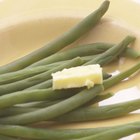
How to Cook Dragon's Tongue Beans

How to Cook String Beans
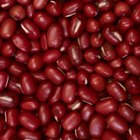
How to Soak Adzuki Beans

How to Cook Beans

How Do I Prepare and Cook Lupine Beans?

How to Cook Green Beans to Be Crisp and ...

How to Cook Petai

How to Reconstitute Dried Beans
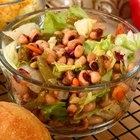
The Best Ways to Cook Fresh Blackeyed ...
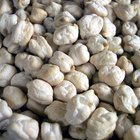
How to Freeze Garbanzo Beans

How to Cook Broad Bean Shells

How to Rehydrate Chickpeas
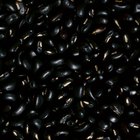
How to Cook Dry Black Beans

How to Cook Romano Beans
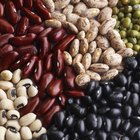
How to Cook Purple Hull Peas in the ...
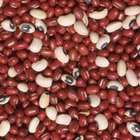
How to Convert Dried Beans to Cooked ...
How Long to Cook Dried Kidney Beans on ...

How to Cook White Beans
Do I Need to Cook Snow Peas Before ...
How to Freeze Fresh Shelled Black Eyed ...
References
- the kitchn: Good Question -- What's a Butter Bean
- The National Gardening Association: Shell Beans
- University of Florida: Butter Beans and Lima Beans
- CNN: Summer Foods -- Butter Beans and Field Peas
- Fine Cooking: Butter Beans
- How to Cook Everything Vegetarian; Mark Bittman
- Mother Nature Network: 8 Poisonous Foods We Commonly Eat -- Lima Beans
Writer Bio
Rachel has worked professionally as a chef and writer on food since 2010. In addition to a Bachelor of Arts degree, she holds a diploma in classic culinary arts from the French Culinary Institute. She has an active interest in wine, fine dining and sustainable agriculture.
Photo Credits
Joan Kimball/iStock/Getty Images